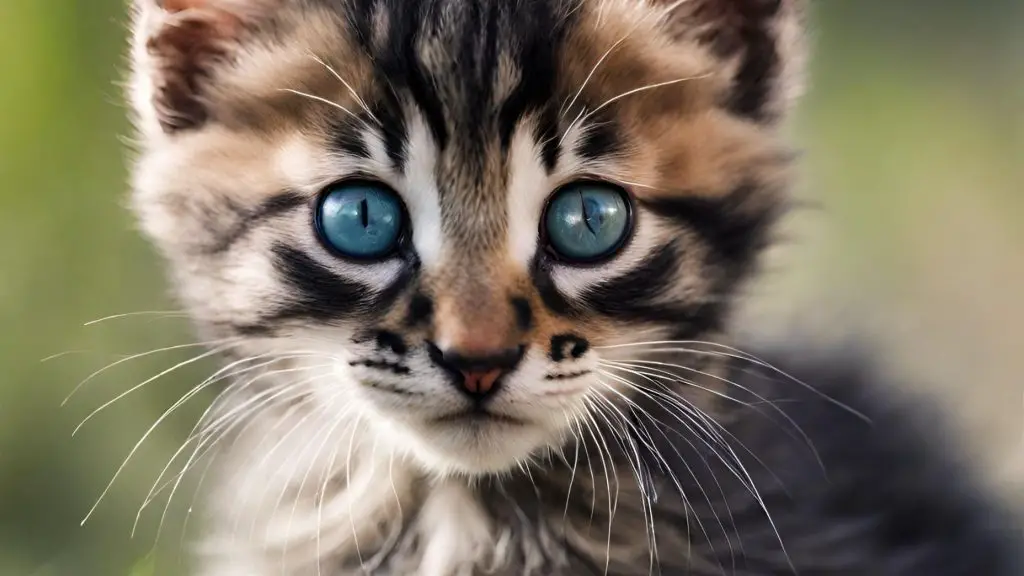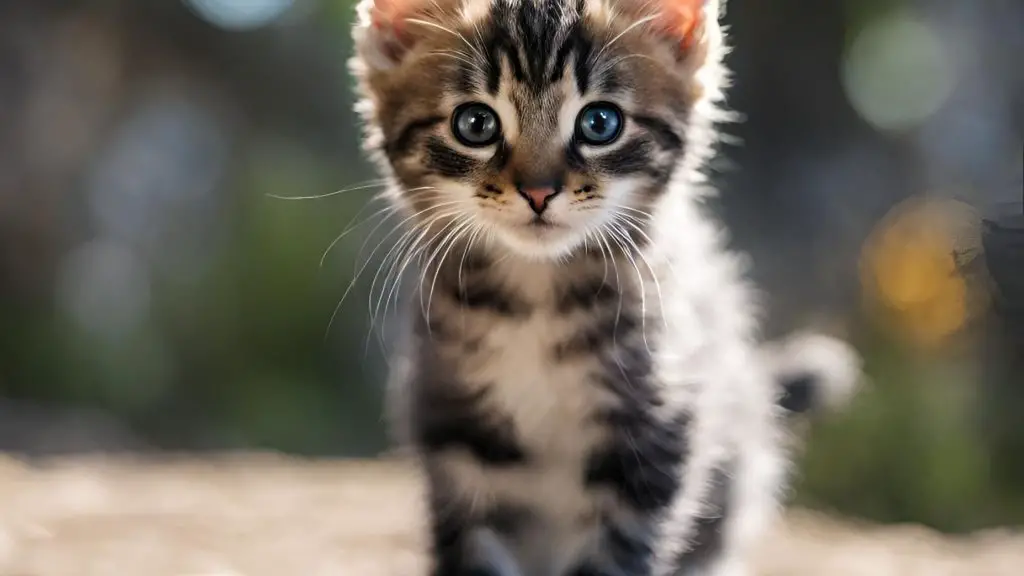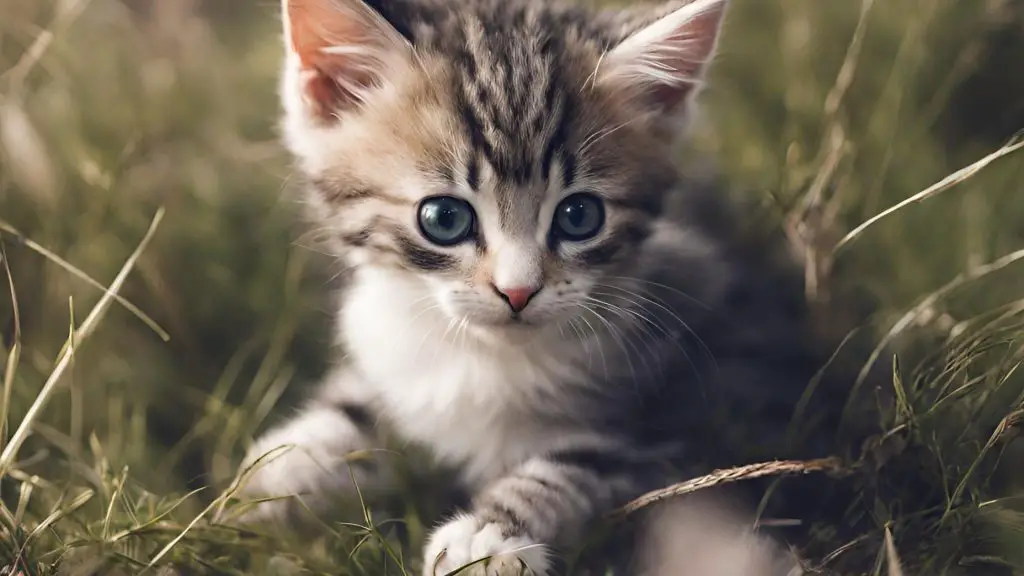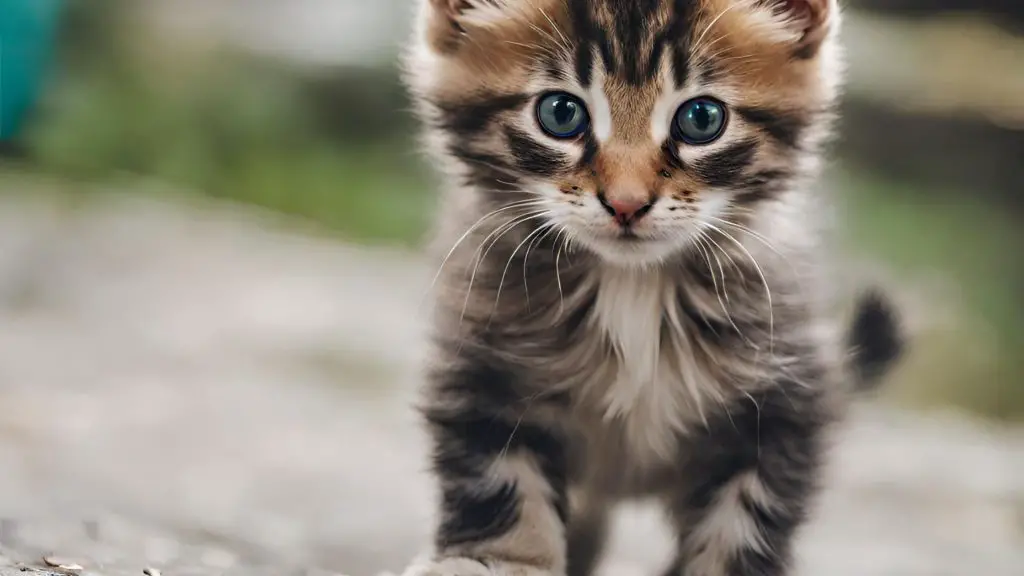Welcoming a feral kitten into your life can be a rewarding yet daunting task. In this feral kitten taming guide, we’re here to show you how to tame feral kittens efficiently, transforming fear into friendship. Whether you are aiming to improve their well-being or preparing them for a future with a loving family, taming feral kittens fast is about pairing the right techniques with a whole lot of heart.
Embarking on this journey requires an understanding that every kitten’s path to trust is unique. Patience, consistency, and intentional care form the foundation of this rewarding process. Be ready to invest time and compassion, as we guide you through tried-and-true methods that pave the way for these spirited little creatures to become affectionate companions.
Understanding Feral Kitten Behavior

When endeavoring to tame feral kittens, a deep understanding of their behavior is crucial. It’s essential to grasp the nuances of feral kitten interactions, which can be vastly different from those of domestic cats. This knowledge forms the foundation of any successful taming process.
The Difference Between Feral and Stray Kittens
It’s important to differentiate between feral and stray kittens, as the approach to taming each type differs significantly. A feral kitten has had little to no human interaction and often lives and survives independently in the wild, whereas a stray kitten has been socialized to humans but has been lost or abandoned.
Common Traits of Feral Kittens
Feral kittens exhibit specific behaviors that set them apart from their domesticated counterparts. Their traits, such as skittishness, a pronounced avoidance of human touch, and sharp survival instincts, are products of a life lived independently. These behaviors speak to the underlying adaptive mechanisms feral kittens develop to thrive without human support.
Setting Realistic Taming Expectations
Adjusting expectations can make a world of difference. Grounded in the reality of feral kitten behavior, it’s important to acknowledge that taming feral kittens is a process that requires time, patience, and often, a tailored approach. Every kitten’s journey to trust and comfort with humans is unique and can be influenced by various factors, including individual experiences and inherent personality traits.
| Behavior | Feral Kittens | Stray Kittens |
|---|---|---|
| Human Interaction | Avoidant, fearful | May seek out human contact |
| Dependency | Self-reliant for food and shelter | Previously dependent on humans |
| Socialization | Minimal to none; wild behavior | Often socialized, familiar with domestic life |
| Response to Taming | Slow to trust; requires patience | Quicker adaptation to domestic routines |
Taking time to assess and understand the behavior of feral kittens is key to setting realistic expectations for taming kittens. Recognizing the contrasts in feral vs stray kittens illuminates why certain kitten behavior strategies are more effective with each group. With dedication and appropriate methods, even the most skittish feral kitten can grow to experience and enjoy the comfort and safety of a human home.
Creating a Safe and Welcoming Environment

Comprehensive kitten care begins with establishing a safe environment for kittens, especially when dealing with the uncertainty of a feral background. To encourage a feral kitten to feel at home and secure, it’s crucial to offer a peaceful and enclosed area that minimizes stress and promotes a sense of safety. By crafting a welcoming space for feral kittens, you lay the groundwork for their eventual trust and comfort around humans.
In this endeavor, there are several factors to consider:
- Room selection – Choose a quiet room away from the household bustle to prevent overwhelming the kitten.
- Hideaways – Provide boxes or cat condos where the kitten can retreat for security.
- Vertical spaces – Include shelves or furniture for climbing, fulfilling their natural urge to survey their surroundings from a safe height.
- Accessible essentials – Arrange food, water, and litter within reach, but spaced to respect their cleanliness instincts.
- Escape-proofing – Ensure windows, doors, and vents are secure to prevent any possible escapes.
To meld these elements harmoniously, consider the following table as a visual guide:
| Feature | Purpose | Considerations |
|---|---|---|
| Enclosed Bed or Box | Safe zone for hiding | Must be cozy and placed in a quiet corner |
| Cat Tree with Perches | Vertical exploration and exercise | Stable and fitted with multiple platforms and hideouts |
| Controlled Access | To maintain a contained environment | Check for possible kitten-sized escape routes |
| Non-Slip Flooring | Confidence in movement | Provide rugs or mats if floors are slippery |
| Interactive Toys | Stimulation and engagement | Safe, non-chewable items that encourage play without human hands |
Striking the right balance between giving a feral kitten the freedom to explore and keeping the environment controlled is paramount. With patience and attentiveness, the gently constructed domain will not only reassure your new companion but also assist significantly in the acclimation process.
The First Steps in Socializing Feral Kittens
Embarking on the journey of socializing feral kittens can be rewarding and challenging in equal measure. A thoughtful approach can transform a skeptical, wild feline into a purring companion. The initial phase involves critical steps to build trust, all the while ensuring mutual safety and comfort.
Approaching a Feral Kitten Safely
Learning how to approach feral kittens requires patience and a gentle demeanor. When you first encounter a feral kitten, it’s vital to minimize intimidation. Keep your movements deliberate but slow, maintain a soft voice, and avoid direct eye contact as it may be perceived as a threat. Providing hiding spots and allowing the kitten to observe you from a distance can facilitate a safer introduction to human presence.
Using Food to Build Trust
Food is a powerful tool in your arsenal for building trust with kittens. Begin by serving meals at the same time and place to create a sense of predictability. Gradually, as the kitten becomes comfortable, you can stay in close proximity while it eats, shrinking the distance over time. This consistent routine associates your presence with the positive experience of nourishing food.
Importance of Routine and Patience
Importance of routine in kitten socialization cannot be overstated. Structured interactions at set times each day establish a sense of security and order for the kitten. Remember that patience is your ally — trust is not established overnight, and sudden movements or forcing interaction can set back progress. Recognize and celebrate incremental improvements, as these small victories are the stepping stones to a tamed, sociable kitten.
| Step | Description | Impact |
|---|---|---|
| Safe Approach | Slow, non-threatening movements; soft speaking voice; indirect eye contact | Reduces kitten’s fear of humans; begins to associate human presence with safety |
| Food as Trust Builder | Regular feeding times; presence during feeding | Associates human with positive stimulus; initiates bond formation |
| Routine & Consistency | Scheduled interactions and playtimes; calm and predictable environment | Strengthens trust; enables kitten to predict and rely on human caretaker |
Take these initial steps seriously, as they lay the groundwork for a trusting relationship with a once-wild kitten, making socializing feral kittens an achievable and deeply satisfying endeavor.
Essential Tips for Taming Feral Kittens

Embarking on the endeavor of socializing fearful cats can be both rewarding and challenging. To ease this journey, there are several actionable tips for taming feral kittens that can significantly increase your chances of success. These methods have been gathered from experienced caregivers and are aimed at gently acclimating your new feline friend to a life with humans.
- Maintain a serene demeanor: Kittens are keen observers and will react to your energy. Always approach them with calmness to foster a trusting relationship.
- Consistency is key: Establish a predictable routine. Feed, play, and interact at the same times daily to create a secure and trusting environment for the kitten.
- Speak softly: The use of a soothing voice can calm a fearful kitten and make them more receptive to interactions.
- Respect their space: Allow the kittens to come to you on their terms. Do not force interaction, as this can lead to setbacks in trust building.
- Gradual Exposure: Introduce handling slowly, starting with brief sessions and gradually increasing them as the kitten becomes more comfortable.
Celebrating small achievements will pave the path for socializing fearful cats. Whether it’s a quiet purr, a slow blink, or accepting a treat from your hand, these moments are monumental strides in the life of a formerly wild kitten. Remember, what might seem like a minuscule step to us is a giant leap for them.
Below you’ll find an outline of recommended practices for caregivers looking to understand how to tame wild kittens. These insights reflect the collaborative knowledge of those who have successfully navigated the taming process.
| Action | Purpose | Result |
|---|---|---|
| Establish feeding times | To create a routine and associate human presence with positive experiences | Increases trust and dependence on caregiver |
| Use toys instead of hands | To prevent associating hands with play and potential aggression | Promotes safe interaction and play behavior |
| Gradual desensitization to touch | To slowly acquaint the kitten to human contact | Lessens fear of human touch, leading to acceptance and affection |
| Provide hiding places | To give the kitten a sense of security when overwhelmed | Reduces stress and aids in the adjustment process |
Remember, the path to taming feral kittens requires patience, compassion, and time. With these tools and techniques, you can transform the life of a feral kitten, shaping a future filled with warmth, safety, and love.
Building Trust with Feral Kittens

Successfully socializing scared kittens hinges on establishing a foundation of trust. The techniques and interactions we introduce to feral kittens can accelerate their transformation from wary and fearful to accepting and even affectionate. The following strategies are vital in building trust with feral kittens in compassionate and non-threatening ways.
Non-threatening Interaction Techniques
Interacting with feral kittens requires patience and sensitivity to their state of mind. Begin by speaking in a soft, gentle tone to convey calmness. Make yourself small and unimposing by sitting or lying on the ground. Avoid direct eye contact initially, as this can be interpreted as confrontational. Instead, use peripheral vision to keep tabs on the kitten’s reactions. Offer toys on a string to encourage playful behavior without the need for close contact, which can help in gauging kitten comfort.
Gauging the Kitten’s Comfort Level
Understanding kitten body language is critical in assessing their comfort level. Look for signs of relaxation such as a loose body, half-closed eyes, or a willingness to approach you. Conversely, a tucked tail, flattened ears, or hissing are indications that the kitten feels threatened. It’s important when socializing scared kittens to respect these signs and not push them beyond their comfort zone. Patience here is key, and small steps forward should be celebrated.
From Fear to Acceptance: A Gradual Process
The transition from fear to acceptance is a journey that happens at the individual kitten’s pace. For some kittens, the progression may be swift, while others require more time to build confidence. The ultimate goal is to foster a sense of security that allows the kitten to accept and even seek out your presence. It may begin with simple proximity and progress to a curious sniff, followed by a tentative paw touch, and eventually, a full cuddle. Each step forward is a triumph in building trust with feral kittens.
| Sign of Discomfort | Recommended Response | Sign of Comfort | Ways to Encourage Trust |
|---|---|---|---|
| Hissing or growling | Give more space, reduce eye-contact | Approaches willingly | Offer treats or gentle play |
| Flattened ears, tucked tail | Maintain a quiet and calm environment | Blinking slowly at you | Slow blinks in return, soft talking |
| Attempting to hide or escape | Make yourself less intimidating by sitting down | Relaxed posture | Gradual petting, starting with less sensitive areas |
| Retreating when approached | Let kitten come to you on their terms | Purring or kneading | Continue interaction, gentle strokes, and kind words |
Remember, the process of socializing scared kittens and nurturing them into confident, trusting cats does not happen overnight. It is a testament to the resilience of feral kittens and the dedication of those willing to invest the time and love necessary to help these animals adapt to a safer, more affectionate world.
Addressing Health Concerns for Feral Kittens

When it comes to feral kitten care, addressing health issues is pivotal to ensuring they lead a life free of discomfort and diseases. Helping feral kittens adjust to a new environment requires particular attention to feral kitten health concerns, which may be more pronounced due to their lack of early human contact and medical care. This section covers essential health care steps and the importance of establishing a relationship with a veterinarian early on.
First and foremost, vaccinations play a critical role in safeguarding feral kittens from common diseases. Kittens are susceptible to conditions such as feline distemper, calicivirus, and rabies, all of which are preventable with a timely immunization schedule. Regular deworming and flea treatment are also necessary, as parasites can severely affect a kitten’s health and development.
Spaying or neutering is another key aspect of health care, helping to prevent overpopulation and reduce aggressive behaviors linked to mating. It is advisable to consult with a veterinarian for the best time to spay or neuter, considering the kitten’s health and age.
Moreover, any visible injuries or signs of illness such as eye infections, respiratory problems, or unusual behavior warrant immediate veterinary attention. Feral kittens, having been exposed to the elements and potential hazards, might arrive with injuries that require professional treatment.
- Ensure vaccinations are up-to-date to prevent common infectious diseases
- Implement a regular parasite control program to combat fleas, ticks, and worms
- Spay or neuter to promote a healthier life and reduce the risk of certain diseases
- Seek veterinarian care for any injuries or signs of illness
- Maintain a record of all medical treatments and check-ups
Being proactive with a feral kitten’s health does not only eliminate preventable diseases but also paves the way for easier socialization, as a healthy kitten is more likely to be receptive to human interaction. It is an investment into their future well-being, supporting the transition from a wary feral to a loving companion.
Play Therapy: A Tool for Socializing Feral Cats
Introducing feral kittens to play therapy is a critical step in their journey towards socialization. Not only does it provide a way for these kittens to engage in natural behaviors, but it also bridges the gap between their wild instincts and the potential for domestic life. Selecting the right kind of toys and fostering interactive play sessions can significantly decrease anxiety, aiding in their transition to a more sociable lifestyle.
Choosing the Right Toys
When selecting toys for feral kittens, the goal is to mimic their natural prey to stimulate their hunting instincts in a controlled environment. Toys that move unpredictably and encourage pouncing, chasing, and batting can be particularly beneficial for their physical and mental development. Look for options that are small and lightweight, allowing for easy capturing and carrying, which can emulate the satisfaction of a “successful hunt.”
Interactive Play to Reduce Anxious Behaviors
Engaging feral kittens in play therapy is not just for fun—it’s a strategic approach to reduce kitten anxiety. Regular interactive play sessions help establish a routine, providing a sense of stability. It’s vital that these sessions are predictable and positive, fostering a safe space for kittens to explore their behaviors without fear. Wands with strings or feathers can encourage leaps and jumps, while puzzle toys can stimulate their problem-solving skills.
Observing Behavioral Changes Through Play
Play therapy for kittens offers a unique window into the nuances of their behavior. It’s important to observe how each kitten interacts with their toys and human companion, noting any signs of increased confidence or curiosity. Positive behavioral changes may include the kitten initiating play or seeking proximity to their human playmate—both strong indicators of growing trust in the feral cat socialization process.
| Toy Type | Benefits | Usage Tips |
|---|---|---|
| Wand and Feather Toys | Encourages jumping and aerial capture skills. | Move the toy like a flying bird to capture the kitten’s attention. |
| Toy Mice and Balls | Mimics real prey, promoting stalking and pouncing. | Provide a variety to prevent boredom and stimulate different types of play. |
| Puzzle Feeders | Stimulates problem-solving abilities, offers mental stimulation. | Begin with easier puzzles to build confidence before introducing more complex challenges. |
| Tunnels and Boxes | Creates a safe space for hiding and promotes exploratory behavior. | Place toys inside to encourage investigation and playful interaction. |
Taming Feral Kittens: A Journey of Patience and Care
Embarking on the mission of taming stray kittens is not for the faint of heart. It is a silent pact of commitment, a road lined with challenges, but marked by rewarding milestones. Gaining a feral kitten’s trust might seem like a mountain to climb, but remember that every small step contributes to a peak reached. Success in this endeavor isn’t measured in days but in the consistent, gradual progress that comes from patient care for kittens. With each offered morsel, each softly-spoken word, and every moment you resist the urge to rush the process, a bond is slowly but surely fortified.
As every kitten is unique, feral kitten behavior modification strategies must be equally adaptive and responsive to the individual needs and pace of each little one. Real-life stories from caretakers, combined with expert advice, showcase the truth that with time and tenderness, felines who once flinched at the thought of human touch can learn to lean into a gentle stroke. These testimonies serve not only as inspirational tales but as blueprints for those willing to put in the painstaking work that this journey demands.
The path to transforming the lives of feral kittens may test your patience, but it is also a testament to the resilience of these astonishing creatures. As you reach the end of this guide, carry forward the wisdom that while the process is slow, the rewards of a kitten’s purr, its contentment, and trust, are immeasurable gifts. Your unwavering care and compassion can light the way from wildness to warmth, and it’s this shared bond, forged over time, that celebrates the miracle of change that love and kindness can bring.
FAQ
How do you tame a feral kitten fast?
Taming feral kittens quickly involves creating a safe, quiet environment to reduce stress, using food to build trust, establishing a routine, and gradually introducing physical contact with patience and consistency. It’s important to set realistic expectations, as the taming process can vary greatly among individual kittens.
What’s the difference between feral and stray kittens?
Feral kittens are born and raised in the wild without human contact, and are typically wary of humans. Stray kittens have had human contact in the past and are usually more receptive to human interaction. Understanding this difference is crucial in determining the right socialization approach.
What are some common traits of feral kittens?
Feral kittens generally exhibit skittishness, hide frequently, hiss or scratch when threatened, and have a strong survival instinct. Recognizing these traits helps in tailoring the taming process to support their transition to a domestic environment.
How can I create a safe and welcoming environment for a feral kitten?
Provide a small, quiet space with hiding places, comfortable bedding, easy access to food and water, and litter boxes. Ensure the room is escape-proof and gradually introduce new stimuli to help the kitten adapt without overwhelming them.
What are the first steps in socializing feral kittens?
The initial steps include approaching the kitten slowly and without direct eye contact, using food to create a positive association, and maintaining a routine to build trust. Always let the kitten set the pace for interactions to ensure they feel safe and in control.
What are some essential tips for taming feral kittens?
Remain calm and move predictably around kittens, use a soothing voice, offer treats to encourage interaction, and celebrate small signs of progress, like a kitten coming out of hiding or accepting food from your hand. These actions help develop a bond over time.
How can I build trust with a feral kitten through non-threatening interaction techniques?
Sit or lie down at the kitten’s level to seem less intimidating, avoid sudden movements, and speak softly. You can also extend a finger for the kitten to sniff, allowing them to initiate contact, and use toys to interact without physical touch until the kitten becomes more comfortable.
How do I gauge a feral kitten’s comfort level?
Pay attention to the kitten’s body language. Signs of comfort include a relaxed posture, willingness to approach, purring, and kneading. Signs of discomfort or fear include flattened ears, hissing, growling, and attempts to hide or escape.
Can you explain the gradual process from fear to acceptance in feral kittens?
Acceptance in feral kittens begins with recognizing their fears and creating positive experiences. Gradually introduce handling by first allowing the kitten to approach you, then progress to gentle petting, and eventually to holding. Each stage can take several days to weeks, depending on the kitten’s responses.
What health concerns should I address for feral kittens?
Key health concerns include vaccinations, spaying or neutering, deworming, flea control, and addressing any injuries or illnesses. Consult a veterinarian for a thorough examination and to determine a healthcare plan for the kitten.
How can play therapy help in socializing feral cats?
Play therapy is an effective way to reduce a kitten’s anxiety, allow for the expression of natural behaviors, and build positive associations with humans. Choose engaging toys that encourage interaction, such as wands or balls, and observe how the kitten’s behavior changes during play to gauge their social progress.
What is the significance of patience and care in taming feral kittens?
Patience and care are essential in building a trusting relationship with a feral kitten. This process cannot be rushed, as each kitten adapts at their own pace. Consistent, gentle interactions paired with compassionate care can transform a once-feral kitten into a loving companion.








